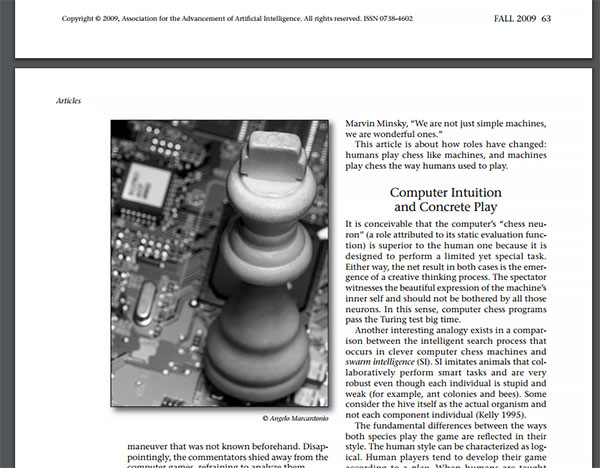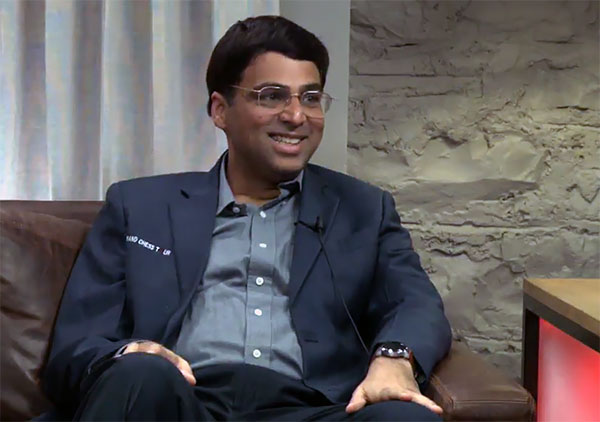


The ‘competition’ between man and machine is a long and well-documented one, with famous examples dating back to at least the Industrial Age when machines began to replace humans in mechanical and repetitive endeavor. One of the most famous stories is the battle between John Henry and the Steam Drill, a tale that is deeply bound in fact and fiction.

Statue of John Henry outside the town of Talcott in Summers County, West Virginia (photo by Ken Thomas)
The story takes place in the late 1800s when railroads were being built around the United States as fast as possible. Tunnels were dug out of mountains with men driving a steel drill into rock to make holes for explosives to blast the rock. In order to accelerate this process, a steam drill was developed, essentially displacing men from their jobs. According to legend, a powerful African-American, John Henry, tested his prowess as a steel-driver in a race against a steam-powered hammer, a race he won, only to die in victory with his hammer in his hand as his heart gave out from stress. Whether true or not, what matters nevertheless is how persistent this tale remains to this day, and what it says about our relationship to our very own creations.
It quickly became clear that such feats of ability were exercises in futility, and no one even considers whether they can outrun a car, or outlift a crane. What was left was intelligence, where we still had no rivals, and while abacuses and calculators existed, there were always exceptional humans who could out do even them. Eventually, even that race of crunching numbers lost ground and although never tested in a formal match as they did in chess, the machines’ superiority in this is not doubted by any.

The top checkers program Chinook challenged the greatest player the game ever knew, Marion Tinsley
So where does humanity’s last obvious edge lie? Overall intelligence and the ability to tie it all together? There is no doubt this is true now, but it is a vague claim, and once technological singularity is achieved, even that will quickly cease to exist. Technological singularity is the term used to describe when true Artificial Intelligence is achieved, surpassing human intelligence.
No, right now, the area where we like to claim clear superiority is in creativity. Although there seems to be little doubt it is an overall race we still hold an edge in, the question remains for how long? This has even been the subject of many a science-fiction tale, always quick to acknowledge the machines’ ability to calculate far beyond our greatest imagination, yet ultimately trumped by human’s creativity. In the first Star Trek film, released in 1979, a machine of godlike knowledge realizes that its only way to evolve is to join with a human and acquire his creativity, unconstrained by the boundaries of logic.
Man marries machine in Star Trek The Motion Picture (1979) to transcend each other's limitations
In chess, with the advent and inclusion of chess engines, this has been a significant debate for some time. It isn’t so much a question of whether or not they find moves that defy our ability to understand them, or that challenge our understanding of what is acceptable, but whether or not these moves are early examples of machine creativity.
In 2009, Shay Bushinsky, the co-author of the chess engine Junior, published an article in AI Magazine debating this very subject. In the article, titled “Deus Ex Machina – A Higher Creative Species in the Game of Chess”, he examines the question of what is creativity is, using the Eduard de Bono theory of lateral thinking, which identifies techniques such as ‘nonconformism’ and “thinking out of the box”. Bushinsky’s conclusion, supported by reasons he gave in his examination, was that computers were more creative than humans in chess.

Co-author of the famous chess engine Junior, Shay Bushinsky examines machine creativity in chess
More recently, even things usually ascribed purely to the act of creation in chess, such as chess problems, have seen computer programs challenging these fields with their own inventions. Pal Benko wrote a lengthy article in which he examined ten problems devised entirely by a computer program, and concluded they could not be qualified as ‘artistic’.
In both cases, we find ourselves facing moves and positions produced by machines would have been defined as ‘creative’ if they had been born by a human, yet as they stemmed from a machine, we balk. Is this wrong? Isn’t this just abject prejudice, refusing to call an ace an ace and denying the machine its due? I think not, and will explain why, but don’t think that is the end of it either.
I can only agree with Bushinsky and de Bono on the criteria of nonconformism and “thinking out of the box” as essential to defining what is creative or not. My bone of contention is the question of intent. Thinking out of the box means not only examining ideas that are outside the scope of those that are usually used, but understanding that is what is being done. In other words, before claiming to have found a novel idea, one would have to know what the old ideas were and realize that this idea is indeed new. If I were to write a phrase that transgressed certain rules of the language, I can only claim it was an act of creativity if I deliberately did so, knowing I was breaking some rules. If I wrote this same mistaken phrase simply because I was unaware of the rules that applied, then one would have to conclude my phrase was the result of ignorance, not creativity.
I think the question of chess moves played by a machine that a human would not have considered is subject to the same conditions. Yes, the moves are original by human standards, but the chess engine did not choose them with an understanding, at any level, that they were unusual. This is not to take away the value of their contributions to the game in any way or form, and as Vishy Anand recently explained himself when asked what had changed with the growing inclusion of computer analysis in chess:
“I've had to learn that a lot of moves that I thought were ugly are very strong, and I had to learn that a lot of moves that I think are strong are not. I wouldn't say we have discarded all classical principles, but there are so many nuances in chess, and that's probably the hardest thing to slowly learn.”

Vishy Anand is a player who has weathered the full transition from the earliest days of computer involvement in chess, to the modern game as it is known today, and he has done so at the very highest level.
Does that mean humanity’s hold on creativity is unchallenged thanks to a pretty little piece of semantics? No. In March 2016, we witnessed a truly historic event: the rise of DeepMind’s program AlphaGo, and a victory over one of the world’s best human Go players at least a decade earlier than most pundits had thought possible. The victory and leap forward were only part of the reason for its historic importance. The biggest part was how it had been achieved.

After a shock loss, Lee Sedol exits the press conference (photo: Google DeepMind)
The program had been developed with minimal intervention by humans, using a very different approach to what had been tried before. Instead of developing a series of rules and guidelines entered by humans much the way chess engines are developed, which were then attributed greater or smaller value according to tests, AlphaGo was given a library of hundred of thousands of online games by top players and told to study them using its deep learning and neural networks. This became the core of it evaluation function, further refined by extensive self-play, with over 30 million games against itself. The result was a crushing victory by the machine over a legendary player still in his prime, punctuated by several key moves that left many top professionals scratching their heads.
In the official live English commentary by top player Michael Redmond, a 9-dan professional in Go, expressed his deep surprise about these key moments. “The move 37 in game two was a really surprising move, it was something very different from anything I had seen before. What exactly was AlphaGo calculating or thinking when it came up with that move?
The live commentary of the games in the match were preceded by fascinating insights by the developers themselves, who shared everything from the history of AlphaGo to how it was created and how it worked. If the video does not start at the right point, skip to 16:20 for the explanation on how it found its "one in ten thousand" move.
David Silver, project leader, explained “It was really interesting hearing from the many commentators about that particular move, saying that a human professional player would actually not have played that move. So I actually, after the game, began poking around AlphaGo’s output to see what it was actually thinking for that move 37. It is actually quite interesting because AlphaGo has a model of what humans will do in that situation. This is what we call the Policy Network. This is the part of AlphaGo that is trained on humans to predict what humans would do in that situation. So I asked AlphaGo what the probability of playing that move was, and AlphaGo believed that there was a one in ten thousand probability that a human player would have actually played that particular move.”
Naturally, he explained how that was even possible. The base of human moves was a starting point, but it was capable of analyzing other moves, even if its bias was for the top ‘human’ choices, and deep search could allow it to conclude that another move entirely was in fact the best choice. This was what had happened a few times in the match.
Excellent overview of Go and AlphaGo by project leader David Silver, and DeepMind CEO Demis Hassabis
The conclusion was simple: AlphaGo not only knew what was standard for human play, but through its own search and judgement deviated from those choices to deliberately play what was initially considered a move a human was highly unlikely to play. While there might be cases in other fields where this level of judgement and creativity has been shown, this example of DeepMind’s AlphaGo nonetheless leaves no doubt.
Where does that leave mankind? Another lost battle? Hardly. The flaw is in even considering this a battle at all, either to win or to lose. Creativity is not about winning or losing, but understanding that no matter how much we know, there is always something more, something we had not considered, and it is upon realizing this that we embrace the mirabilia of the infinite.